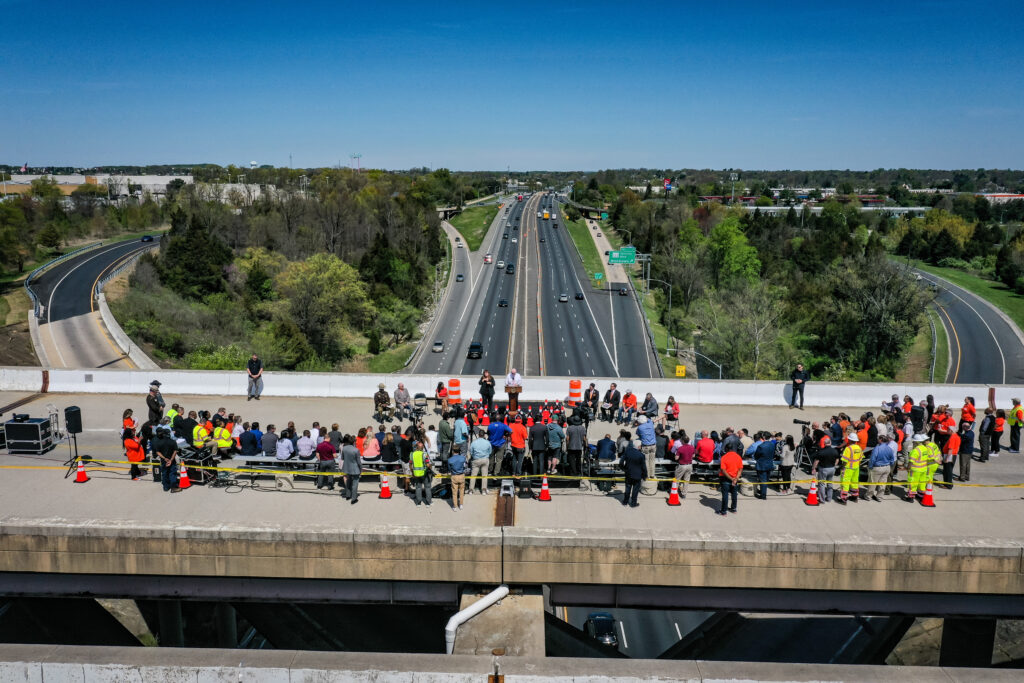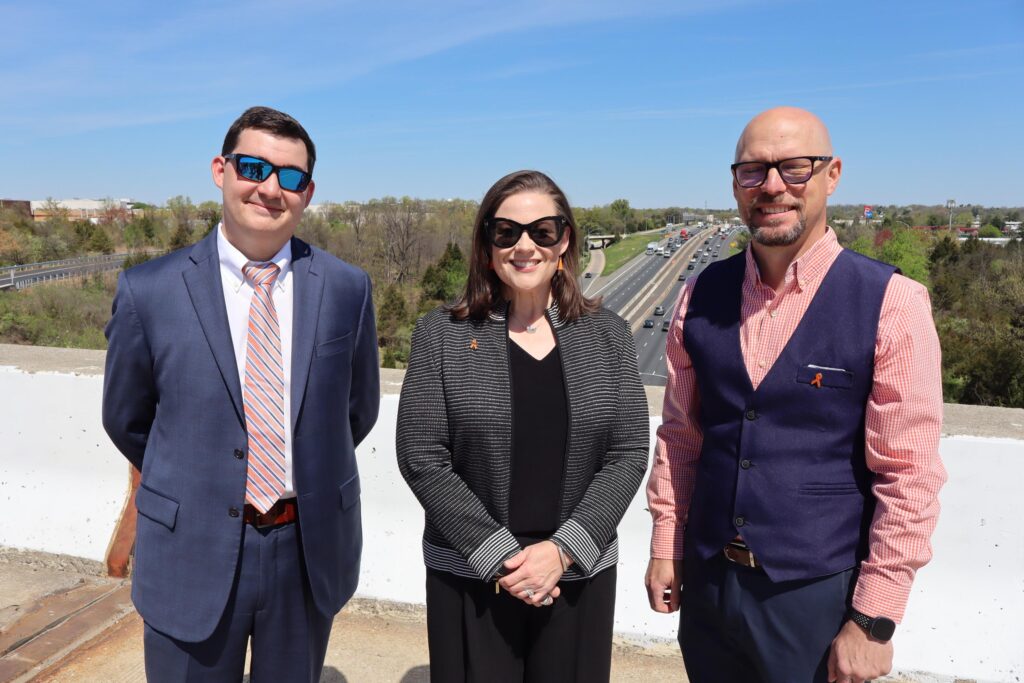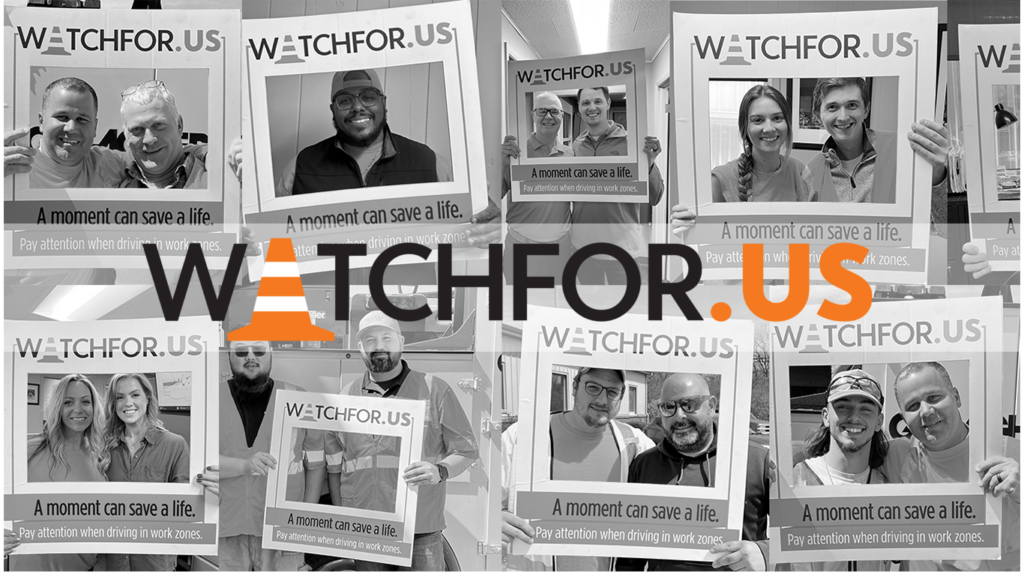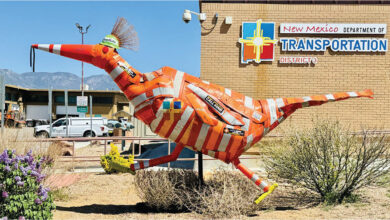NAPA webinar explores how WE change work zone safety outcomes
NAPA’s April 17 webinar on work zone safety explored roadside safety innovations and included a recorded message from Occupational Safety and Health Administration Deputy Assistant Secretary Jim Frederick, but it began on a low note, with the sharing of two stories of work zone fatalities in recent days.
NAPA Government Affairs Director Mitch Baldwin noted news overnight of a work zone intrusion fatality in Pennsylvania as he kicked off Work Zone Safety: How WE Can Change Outcomes, while NAPA President and CEO Audrey Copeland, shared news that earlier in the week, a NAPA member company lost a member of their roadside crew when an impaired driver entered a job site.

outside Baltimore on April 16.
Copeland shared how she and Baldwin attended a National Work Zone Awareness Week (NWZAW) kickoff event outside of Baltimore on April 16 on an overpass overlooking the site of a March 2023 work zone intrusion that left six roadside workers dead.
“We continue to have these challenges,” she told those who attended the webinar, adding that those crashes — not accidents — are stark reminders that work zone awareness outreach is a worthwhile venture.
Copeland pointed to NWZAW resources from partners, as well as the Watch For Us site, as ways for companies to get involved in NAPA’s year-round, public-facing campaign to improve driver behavior within work zones.
Frederick discussed the ways OSHA approaches worker safety, and also riffed off of the NWZAW theme this year: Work zones are temporary. Actions behind the wheel can last forever.
“Work zones are temporary, but the people who work in them are not,” he said. “The men and women who work in work zones on our roadways are not just part of the construction site that eventually gets cleaned up and put away. They are people with lives and family and friends. They’re members of our communities and they deserve to be protected. Every day I take a few moments to think about the number 15 and that’s because that’s the number of workers that die because of work-related acute traumatic injuries every day on average in the United States.”
“Of course, tragically, some of those are workers who work in asphalt and paving,” he said. “There are significant hazards associated with your work. Anything done on the side of or in the middle of roads with moving traffic and vehicles, poses a risk of injury. But we can all, and we can and must do all we can to protect those workers by ensuring that we provide controls to address those hazards and reduce the risk of injury.”
NAPA Vice President for Environment, Health, & Safety Howard Marks talked about the importance of work zone training, which sometimes can be overlooked.
“We know better DOT policies will help, but training and engaging your crews is really key, and there are a ton of training opportunities out there,” Marks said, noting that NAPA’s CrewSafety: Work Zone Training is a free resource, which can augment state and local maintenance of traffic (MOT) and internal traffic control (ITC) plans.
He also noted that additional safety expenses, like truck attenuators, physical barriers, additional police presence, signage and warning lights, can sometimes be covered by state funds activated by the Infrastructure Investment & Jobs Act.
Executive Director of the Minnesota Asphalt Pavement Association Abbey Bryduck discussed the ways her state has been working toward safer work zones, many of which came from a statewide committee on work zone safety that meets twice a year.
“One thing that we recently achieved was a new flagger special provision,” she said. “This will identify intersections that will need to be flagged in project plans, and not only does this help with bid accuracy, but it’s also a move toward removing safety measures from low bid pressures.”
She added that stakeholders in Minnesota have now set their sights on “the Holy Grail” of work zone safety: speed cameras.
“About 25 states are using some kind of automated speed enforcement,” Bryduck said. “If there is another single element out there that can reduce speeding violations by 80% and an up to 50% reduction of fatalities, I’d like to know what that is. There really isn’t anything else that provides more value.”
Arkansas Asphalt Pavement Association Executive Director Park Estes shared successes from his state in working with the DOT on “hybrid” traffic cameras, which are not automated, but can send information to a posted traffic officer on the other side of the work or school zone. He shared statistics showing a 40 percent decrease in crashes within areas where the technology was utilized.
He also shared photos of vehicles that can remove debris, robotic flaggers, and talked about several companies where crews use green clothing to identify new hires, since they may need more safety instruction on the job site.
“They’re reporting that they’re having a lot of success with that,” he said, adding some contractors have gone a step further by assigning mentors, and the Arkansas DOT has begun providing funds to contractors upon request to cover the cost of off-duty traffic officers to remain in their work zones. “Prior to about a year ago, if a contractor wanted to have that, they had to pay for it out of out of their own pocket. Our DOT has really stepped up and said we need to be part of that solution.”

Maryland Asphalt Association’s Tim Smith
Maryland Asphalt Association President Tim Smith said his state is using signage to push infomration to drivers before they approach the work zone, while improving training certification.
“We’ve got to constantly change our messaging and our visual cues to make sure we get that improved driver behavior because we really need all of them to drive responsibly,” he said. “NAPA, nor any of our different SAPAs are going to make any difference if we can’t make sure our workforce in our industry members and our teammates get home each day.”
Asphalt Pavement Association of Oregon’s John Hickey shared how an examination of safety culture, as well as billboards and near-miss reporting has helped to transform work zone safety in his state.

“If there’s a near miss you see in a work zone — a drunk driver or distracted driver — people will talk about it to the end of the shift, but by the end of the project it’s forgotten,” Hickey said, noting that Oregon DOT saw a data vacuum. “That’s real data that we could be using so we’re not just capturing risky driver behavior when it results in an accident, a fatality or something else. ODOT said we need to have a QR code where anybody can report a near miss so we can actually track real time info. So we took that QR code and we are distributing at the preconstruction of all projects. We’re recording that data.”






